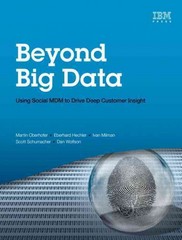Question
Solve in C++ Program 1 Write four functions to perform the following tasks: ReadData : this function opens a file arrays.txt and reads its contents
Solve in C++
Program 1
Write four functions to perform the following tasks:
-
ReadData: this function opens a file arrays.txt and reads its contents into 3 integer arrays named A, B and C. Each array holds 10 integers. The input file contains 3 lines; each line holds 10 integer values. So the data in the first line is used to initialize array A. The data in the second line is used to initialize array B. And the data in the third line is used to initialize array C.
You may assume that arrays.txt has the following integers values:
10 9 7 5 4 4 4 3 2 1
0 1 3 4 5 6 7 8 9 10
0 1 3 4 5 7 10 11 12 13
-
PrintArray: this function prints the elements of an array of any size.
-
ReverseArray: this function reverses an array of any size in place.
-
LongestSequence: this function finds and returns the length of the longest consecutive sequence of numbers in an array of any size. You may assume that the array is sorted in ascending order. For example.
Longest sequence of {1,2,3,4,4,4,5,7,9,10} is 5. Note that repeated numbers in a sequence are skipped.
Longest sequence of {0,1,3,4,5,6,7,8,9,10} is 8.
Longest sequence of {0,1,3,4,5,7,10,11,12,13} is 4.
Write a main program that:
-
Declares 3 arrays A, B, and C
-
Calls the function readData to initialize these arrays
-
Calls the function printArray three times to print the elements of arrays A, B, and C
-
Calls the function reverseArray and sends A as an argument
-
Calls the function printArray to print the elements of array A
-
Calls the function longestSequence three times to find and return the longest sequence in all three arrays. The results should be printed in main
Note: Any parameter that is not supposed to be changed inside a function must be declared as a constant parameter.
Program 2
Write a program that creates an empty vector of strings called V. Vector V grows and shrinks as the user processes commands from a data file called vectorData.txt.
Each line in the transaction file contains a command and the corresponding data. For example, you may have the following information in your file:
Insert Hello 4
Delete 5
The transaction file can only include three types of commands: Insert, Delete, and Print.
-
Insert command inserts a string value in the vector at a specific position. So the Insert command comes with two more information, the string you need to insert and the position it should be inserted at. For example, the first line indicates that the word Hello should be inserted in V[4]. You should check if this insert is possible. It is possible if the position you are attempting to insert the element is a positive number not beyond the size of the vector.
-
Delete command deletes the element at the specified position. So Delete comes with one more information that indicates which element (index) should be deleted. For example, The second line means V[5] should be removed. Again this operation should only be allowed if the index is positive and not beyond the current size of the vector.
-
Print command prints the contents of the vector on the screen.
You may test your program with the following data file:
Delete -1
Insert Students 0
Insert Welcome 0
Insert Back 1
Insert Ready 5
Insert Get 1
Insert To 6
Insert Program 3
Insert Very 3
Insert Good 4
Delete 1
Insert Job 4
Delete 7
Insert CS211 1
Delete 6
Sample Output:
Welcome CS211 Students Very Good Job
Note: Each command must be implemented in a separate function.
Step by Step Solution
There are 3 Steps involved in it
Step: 1

Get Instant Access to Expert-Tailored Solutions
See step-by-step solutions with expert insights and AI powered tools for academic success
Step: 2

Step: 3

Ace Your Homework with AI
Get the answers you need in no time with our AI-driven, step-by-step assistance
Get Started


